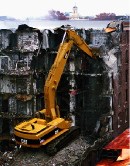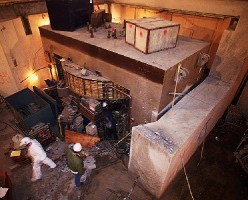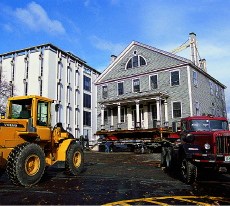
Ten years after the Center for Government and International Studies was first envisioned by a faculty committee, the future site of the complex is finally being readied for construction. The demolition of Coolidge Hall, on the north side of Cambridge Street, began in November. December saw the rubble hauled away. Still ahead is the demolition of the former University Information Services building on the opposite curb, and the relocation of a neighboring wood-frame building on Prescott Street. The project will proceed with or without a tunnel to link the buildings beneath the public street. Construction of the tunnel has been a bone of contention between Harvard and its area neighbors ever since the idea of a second building and tunnel was suggested; project architects proposed them as a solution to neighbors' requests to save the open green space behind Coolidge Hall.
The next 10 years will see the focus of construction activity shift to the North Precinct, lying between Oxford Street and the Harvard Divinity School, where the decommissioning of Harvard's cyclotron is well under way, and the adjacent Palfrey House has made the first of two moves across the site to make way for construction of an underground garage. The historic, wood-framed structure will eventually take its place on Hammond Street, the northern edge of Harvard's campus.
\







